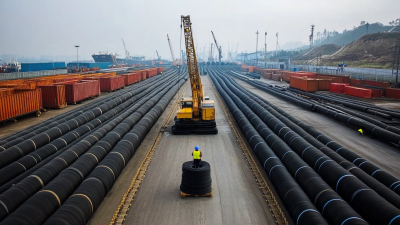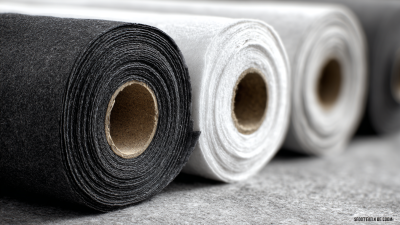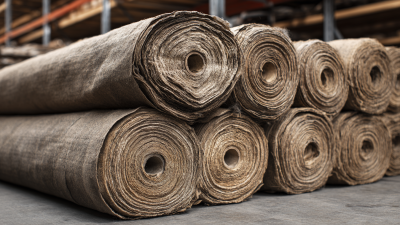Inquiry
Form loading...
- Phone
- E-mail
In the field of sustainable construction, Fibre Geotextiles have emerged as a pivotal innovation, enhancing the efficiency and longevity of various civil engineering projects. According to the "Global Geosynthetics Market Report 2021," the demand for geotextiles is projected to increase significantly, driven by the growing emphasis on eco-friendly construction practices and waste reduction. Fibre Geotextiles, made from synthetic and natural fibers, serve multiple functions such as soil stabilization, drainage, and erosion control, thereby contributing to sustainable infrastructure development. Recent advancements in material technology have led to the production of high-performance geotextiles that not only improve project durability but also facilitate recyclability and reduce carbon footprints. As the construction industry seeks to mitigate environmental impacts, understanding the role and benefits of Fibre Geotextiles becomes essential for professionals aiming to integrate sustainable materials into their projects.
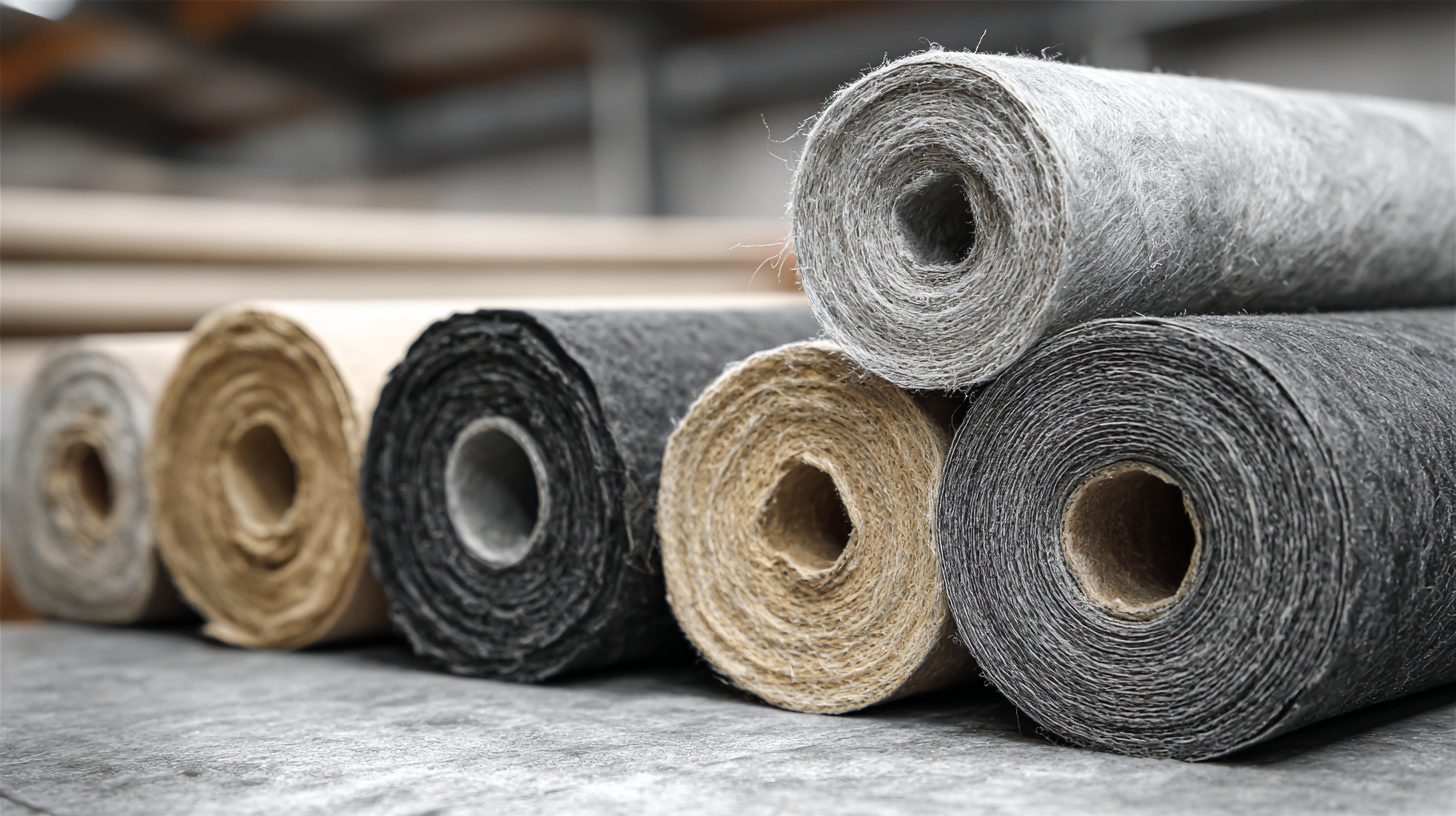
Fibre geotextiles play a crucial role in sustainable construction by providing a versatile solution to various engineering challenges. These materials, made from synthetic or natural fibres, offer functions such as separation, reinforcement, filtration, drainage, stabilization, barrier creation, and erosion control. Their unique composition allows them to effectively manage soil and water interactions, making them an essential component in eco-friendly construction practices.
The use of fibre geotextiles enhances the longevity and stability of infrastructure by reinforcing soil structures and preventing erosion. Their ability to separate different soil layers minimizes mixing, while their drainage capabilities facilitate efficient water management, crucial for maintaining the integrity of construction sites. Additionally, these materials can be engineered to include biodegradable options, aligning with sustainable development goals and reducing the overall environmental impact of construction projects. As innovations in fibre geotextile technology continue to emerge, their application within the realm of sustainable construction becomes increasingly significant, unlocking new potential for environmentally responsible infrastructure development.
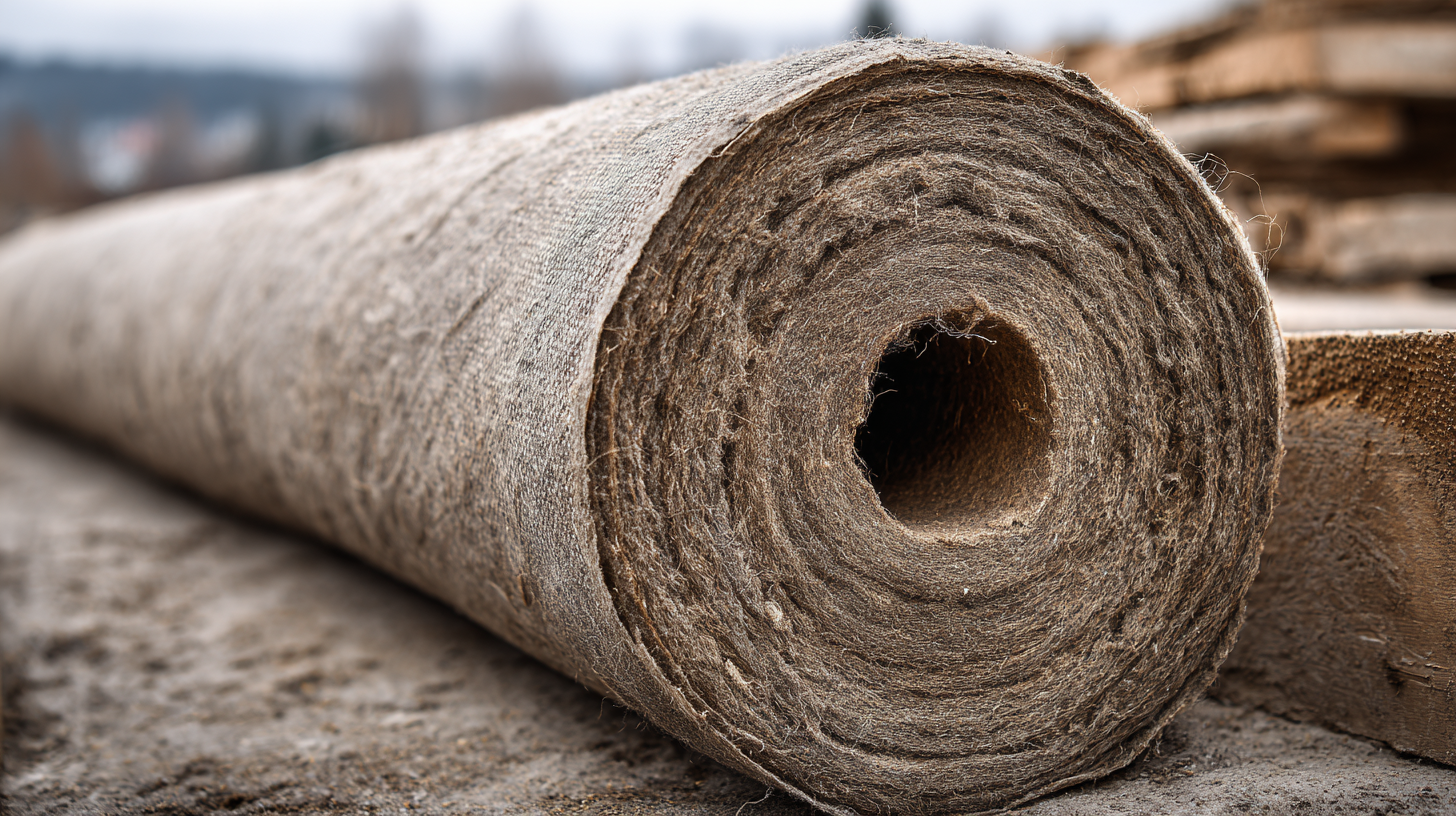
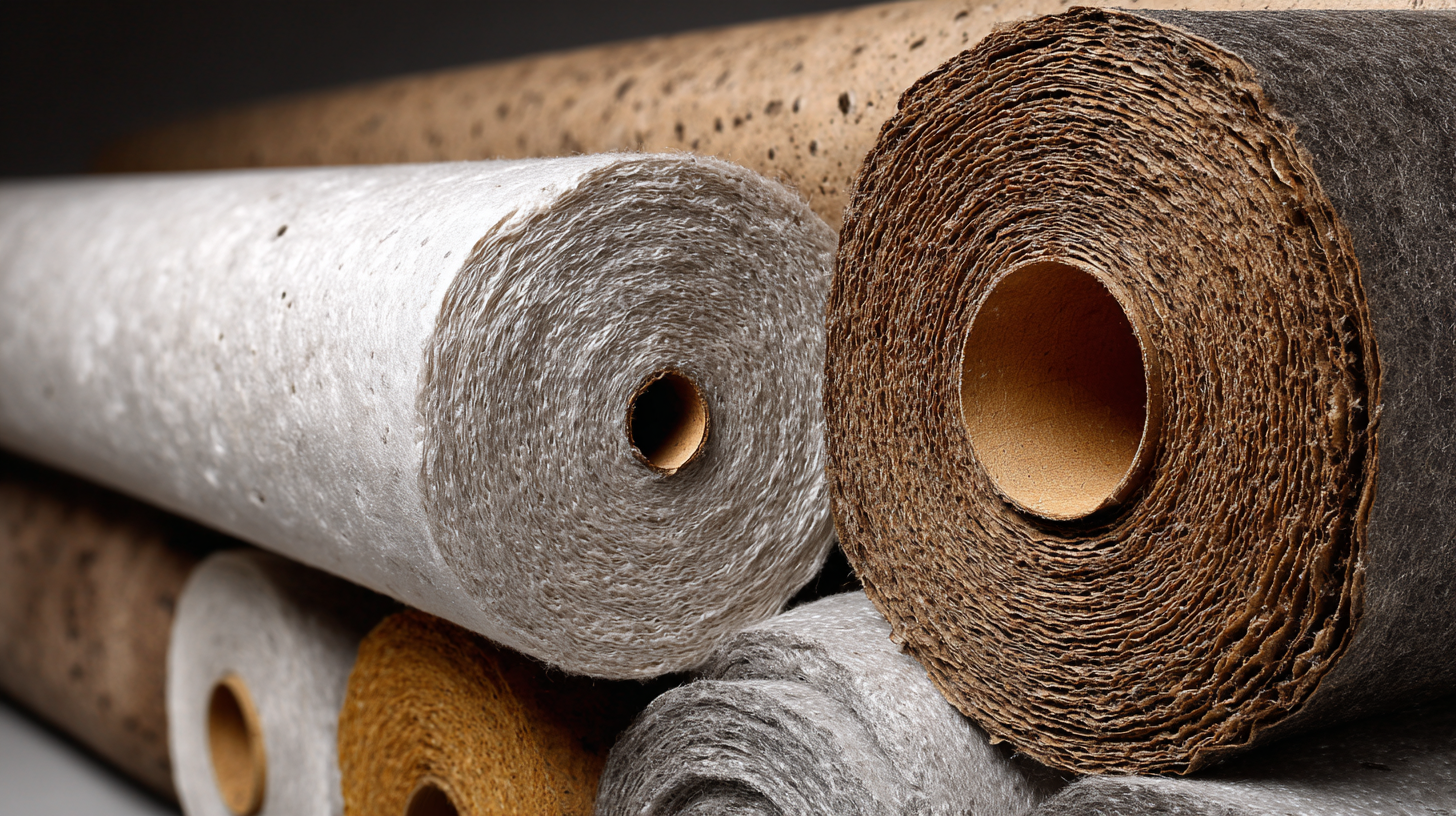 Fibre geotextiles play a pivotal role in promoting sustainability within construction projects by offering considerable environmental benefits. These materials, particularly those derived from plant fibers, not only assist in soil stabilization but also create favorable conditions for vegetation growth as part of effective soil bioengineering strategies. As urban areas grapple with water management challenges, integrating fiber geotextiles into green infrastructure (GI) allows for innovative solutions that are both cost-effective and environmentally friendly. By leveraging these materials, construction projects can contribute to healthier ecosystems while minimizing the risks of soil contamination often associated with traditional geotextiles made from synthetic polymers.
Fibre geotextiles play a pivotal role in promoting sustainability within construction projects by offering considerable environmental benefits. These materials, particularly those derived from plant fibers, not only assist in soil stabilization but also create favorable conditions for vegetation growth as part of effective soil bioengineering strategies. As urban areas grapple with water management challenges, integrating fiber geotextiles into green infrastructure (GI) allows for innovative solutions that are both cost-effective and environmentally friendly. By leveraging these materials, construction projects can contribute to healthier ecosystems while minimizing the risks of soil contamination often associated with traditional geotextiles made from synthetic polymers.
Recent advancements in geosynthetics technology further enhance the performance and sustainability of fibre geotextiles. The diverse applications of these materials extend beyond road and railway construction to include erosion control and landfill management, showcasing their versatility and importance in modern infrastructure development. The focus on textile recycling and durable nonwoven production underscores a shift towards sustainable practices in the industry, ensuring that the use of fibre geotextiles aligns with broader environmental goals. As awareness grows about the ecological footprint of various construction materials, fibre geotextiles position themselves as a strategic choice for environmentally conscious projects.
Fibre geotextiles are increasingly being recognized for their innovative applications in green building practices. These materials are made from synthetic or natural fibers that can enhance soil stabilization, drainage, and erosion control while minimizing environmental impact. One of the most promising applications is in the construction of permeable pavements, where fibre geotextiles help manage stormwater runoff sustainably. By facilitating water infiltration and reducing surface flooding, these materials contribute to healthier urban ecosystems.
Additionally, fibre geotextiles play a vital role in landscaping and bioengineering applications. They can be integrated into green roofs and living walls to provide structural support while promoting plant growth. Their lightweight and durable properties make them ideal for reinforcing soil on slopes, aiding in vegetation establishment, and ultimately enhancing biodiversity. Innovations in the design and manufacturing of fibre geotextiles are paving the way for more efficient waste management practices by utilizing recycled materials, thereby aligning with the principles of circular economy in construction.
This chart illustrates the innovative applications of fibre geotextiles in green building practices, highlighting their benefits in various construction phases including erosion control, soil stabilization, and drainage improvement.
The use of fibre geotextiles is increasingly gaining traction in sustainable construction, as illustrated by successful projects in various parts of the world. For example, recent case studies highlight their implementation in urban developments that prioritize eco-friendly practices. In European port cities, initiatives have successfully integrated fibre geotextiles to enhance soil stability, reduce erosion, and promote habitat restoration, reflecting a commitment to sustainable urban planning.
Tips: When considering the use of fibre geotextiles, it's essential to evaluate the specific requirements of your project, such as soil type and environmental conditions. Conducting thorough research and collaborating with specialists can help in selecting the appropriate materials and techniques that align with sustainability goals.
Moreover, India has also witnessed innovations in sustainable development by employing fibre geotextiles in infrastructure projects. These materials not only contribute to construction longevity but also support local economies by utilizing recycled fibres. This dual benefit of sustainability and economic viability underscores the importance of integrating innovative materials in future construction practices.
Tips: To maximize the benefits of fibre geotextiles, ensure proper installation and maintenance are prioritized. Engaging local communities in education about the advantages of these materials can foster support and enhance the outcomes of sustainable construction initiatives.
Fibre geotextiles have emerged as a pivotal component in the evolution of eco-friendly construction solutions, offering innovative approaches to sustainability. Recent advancements in material science have led to the development of biodegradable and recycled fibre geotextiles that not only reduce environmental impact but also enhance the longevity and performance of construction projects. These materials serve multiple functions, including soil stabilization, erosion control, and drainage management, demonstrating their versatility and effectiveness in various construction applications.
Looking ahead, the future of fibre geotextiles lies in integrating smart technologies and nanomaterials. Innovations such as self-healing geotextiles, which can repair damage autonomously, promise to further extend their lifecycle and reduce maintenance costs. Additionally, the incorporation of sensors within geotextiles may allow for real-time monitoring of soil conditions, paving the way for smarter infrastructure that responds dynamically to environmental changes. As the construction industry increasingly prioritizes sustainability, fibre geotextiles will play a crucial role in realizing eco-friendly building practices that align with global environmental goals.
| Dimension | Description | Current Trends | Future Innovations |
|---|---|---|---|
| Material Composition | Used in construction for filtration, separation, and drainage. | Natural and recycled fibres gaining traction. | Biodegradable materials and smart textiles integration. |
| Environmental Impact | Minimizes soil erosion and enhances ground stabilization. | Increased focus on life cycle assessments. | Innovative designs for improved ecological footprints. |
| Application Areas | Roads, drainage systems, and landscaping. | Growing use in urban infrastructure projects. | Expansion into green roofs and walls. |
| Durability | Resistant to UV rays and microbial degradation. | Advancements in material longevity. | Nano-coatings for enhanced resilience. |
| Cost-Effectiveness | Reduces the need for conventional materials. | Increasing affordability of recycled materials. | Automation in production reducing costs. |
